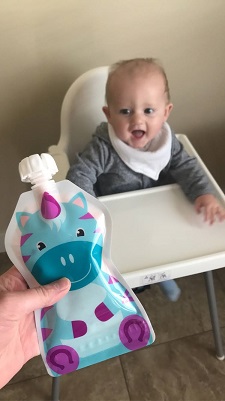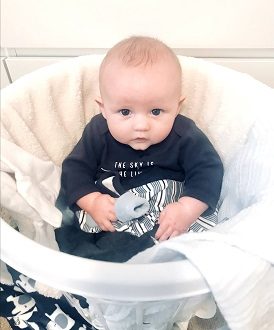
5 Major Things Parents Should Know About Choking
Choking can be so such a scary topic! It can really make parents feel nervous just simply talking and learning about it. Don’t avoid learning about choking though! It can be such a crucial topic to be extremely comfortable with. Shannon Trip (@shantripp) is an amazing pediatric ER nurse who shares so much knowledge with the world! HERE is her website if you want to check her out. She did a free 3-day workshop on choking not too long ago, and I wanted to share what I learned so that more moms and dads can be prepared for choking!
DISCLAIMER: This is NOT medical advice. I am not a doctor. Please consult your doctor if you have any questions.
If you haven’t read my post, What I Wish I Would’ve Known About Baby Shots, definitely check that out! I could’ve been so much more prepared for those first 2 month old shots!
1. Know What Foods Are Major Choking Hazards
Nobody wants to ever experience a choking episode with their child, so that’s why it’s important to do your very best to prevent it! Not giving your children certain foods can really make a difference. Here is a list of foods that you should avoid giving your child before they are about three years old.
Avoid popcorn, hot dogs, hard candy, marshmallows, raw carrots, nuts, chunks of peanut butter (or anything really sticky like that), chunks of cheese or meat, chips, pretzels, and whole grapes.
These are the main foods that children are known to choke on, and it can be risky to give these things to them! No matter what foods you are feeding your children, be sure to cut them in very small pieces!
2. Be Confident with CPR in Infants and in Children
This is always scary to learn, but it is SO important to know! Those first few seconds after a child starts choking are the most crucial, so you have to jump up and help them immediately. Don’t wait for someone else/an ambulance to come. Shannon Tripp has a wonderful video that she shares under a CPR story highlight on her Instagram account. Her own child started choking in a restaurant once, so she shares that story and then teaches you how to do CPR! Be sure to go watch that and practice it on a doll or stuffed animal so that you feel comfortable and prepared to help your child when they need you the very most.
3. Know the Difference Between Choking and Gagging
This is pretty simple. When babies are learning how to eat, there is a LOT of gagging involved. It isn’t fun to watch, and it is very uncomfortable, but they have to do it to learn. Gagging will involve a lot of choppy noises, coughing, maybe even crying. Choking is when there is no sound at all. If you aren’t hearing coughing, wheezing, crying, anything, then your child is choking. If they start experiencing a color change along with no sound, then you can be absolutely confident that their airway is blocked. Gagging might make you think that they are choking, but be sure to leave them alone and work it out on their own when they are gagging. Knowing the clear difference between gagging and choking can be really helpful as you watch your baby eat, so remember these differences!
4. What To Do After Your Child Chokes
Hopefully it won’t ever happen to you, but if your child chokes and you do CPR and get the object out, what do you do now? Most of the time, children will be just fine. If you are ever uncomfortable caring for them at home though, definitely take them to the pediatrician. However, if you are noticing a lasting cough, drooling, wheezing, trouble breathing or trouble swallowing, then you need to take your child in immediately. These are signs (that could take several days to show up, by the way) that a portion of the object might have gone into their lungs instead of fully coming out when you did CPR. Be sure to watch closely for symptoms like these after a choking episode happens!
5. How to Prevent Your Child From Choking When You Aren’t Around
There will obviously be times when your child will go play at grandma’s house or a friend’s house, and you can’t always count on the adults to cut their food up small enough to your comfort. Be sure to teach your children how to cut their own food with their teeth. For example, instead of eating a grape whole, teach your child to eat a grape by biting into it instead of popping the whole thing in their mouth. Make sure your children (after a certain age, of course) understand that it is dangerous for them to eat big bites, and that they need to learn how to break their food up small.
Choking is a little bit of a nerve-wracking topic to read about, so I hope you aren’t feeling too nervous after reading this! Just stay clam, and make sure you know EXACTLY what to do if your baby/child starts choking! You have to be the hero in this situation and you can do that by preparing now! You got this mom! Dad needs to know it too! Do you have any other tips about choking? Have you ever had to perform CPR on an infant or child? Tell me in the comments!




